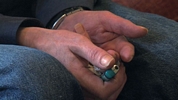|
|
 Acne (1,500) Acne (1,500)
 Addictions (1,500) Addictions (1,500)
 Advice (1,500) Advice (1,500)
 Allergies (1,092) Allergies (1,092)
 Alternative Medicine (1,500) Alternative Medicine (1,500)
 Anti Aging (1,500) Anti Aging (1,500)
 Breakup (1,500) Breakup (1,500)
 Cancer (1,499) Cancer (1,499)
 Dental Care (1,500) Dental Care (1,500)
 Disabilities (1,500) Disabilities (1,500)
 Divorce (1,500) Divorce (1,500)
 Elderly Care (1,498) Elderly Care (1,498)
 Goal Setting (1,500) Goal Setting (1,500)
 Hair Loss (1,500) Hair Loss (1,500)
 Health and Safety (1,497) Health and Safety (1,497)
 Hearing (1,500) Hearing (1,500)
 Law of Attraction (1,499) Law of Attraction (1,499)
 Marriage (1,500) Marriage (1,500)
 Medicine (1,497) Medicine (1,497)
 Meditation (1,499) Meditation (1,499)
 Men's Health (1,500) Men's Health (1,500)
 Mental Health (1,500) Mental Health (1,500)
 Motivational (1,500) Motivational (1,500)
 Nutrition (1,495) Nutrition (1,495)
 Personal Injury (1,499) Personal Injury (1,499)
 Plastic Surgeries (1,500) Plastic Surgeries (1,500)
 Pregnancy (1,496) Pregnancy (1,496)
 Psychology (1,500) Psychology (1,500)
 Public Speaking (1,500) Public Speaking (1,500)
 Quit Smoking (1,500) Quit Smoking (1,500)
 Religion (1,499) Religion (1,499)
 Self Help (1,500) Self Help (1,500)
 Skin Care (1,500) Skin Care (1,500)
 Sleep (1,500) Sleep (1,500)
 Stress Management (1,500) Stress Management (1,500)
 Teenagers (1,492) Teenagers (1,492)
 Time Management (1,500) Time Management (1,500)
 Weddings (1,500) Weddings (1,500)
 Wellness (1,500) Wellness (1,500)
 Women's Health (1,500) Women's Health (1,500)
 Women's Issues (1,500) Women's Issues (1,500)
|
Though it is not popular in the U.S., lymphedema surgery is being tested as a treatment for lymphedema Asia and Europe. Surgery is a fairly recent option for the effects of lymphedema, and it's still being tested to find a cure for the problems associated with this condition. Though surgical methods have not been widely adopted in the U.S., there are new procedures that are less invasive and gaining in popularity among doctors. Ablative procedures, also called debulking, and lymphaticovenular bypass are the two main types of procedures being tested to find a quick, long-term solution to the symptoms of lymphedema. Lymphaticovenular bypass is being tested as a solution for lymphedema, specifically among breast cancer patients. This procedure places a few incisions in the affected arm to redirect fluid away from the damaged lymph vessels. A couple of microsurgical tools redirect the vessels in the affected area in order to prevent the buildup of the lymph fluids. The procedure does not last very long, and usually the patient can be released from the hospital within a day of the surgery. Though this lymphedema surgery is effective within a few months after it's complete, the patient is still required or encouraged to continue the use of compression bandages as an additional method of treating the lymphedema. And although this procedure is beginning to show that is effective at reducing swelling and the collection of fluids over periods longer than 1 year, it does not cure the causes of lymphedema. It is only a way to reduce the swelling and weight. Continued use of compression and massage are still needed. There are no surgical or medical treatments available yet that will cure the root causes of swelling, which is why these methods of controlling the symptoms are not readily endorsed or practiced yet in the United States. The second type of surgery mentioned in connection with treating lyphedema is called debulking. Debulking is fairly controversial surgery, and a rarely used one, because of the damage it can do to the tissues. It is one of the oldest types of lymphedema surgery, and is not without its own set of complications. Debulking involves opening up the affected areas and removing the engorged tissues. There can be a few problems that develop during this procedure. In certain instances, it can cause paralysis of the affected limbs. The risks associated with this second type of lymphedema surgery are the main reason why it's not commonly used anymore. But, with the development and testing of Lymphaticovenular bypass, new procedures are coming out that suggest doctors and surgeons are getting closer to a cure for the symptoms of lymphedema. However, with all the progress that's being made to help the symptoms subside, little progress is being made in curing the causes of lymphedema.
|
|
|



